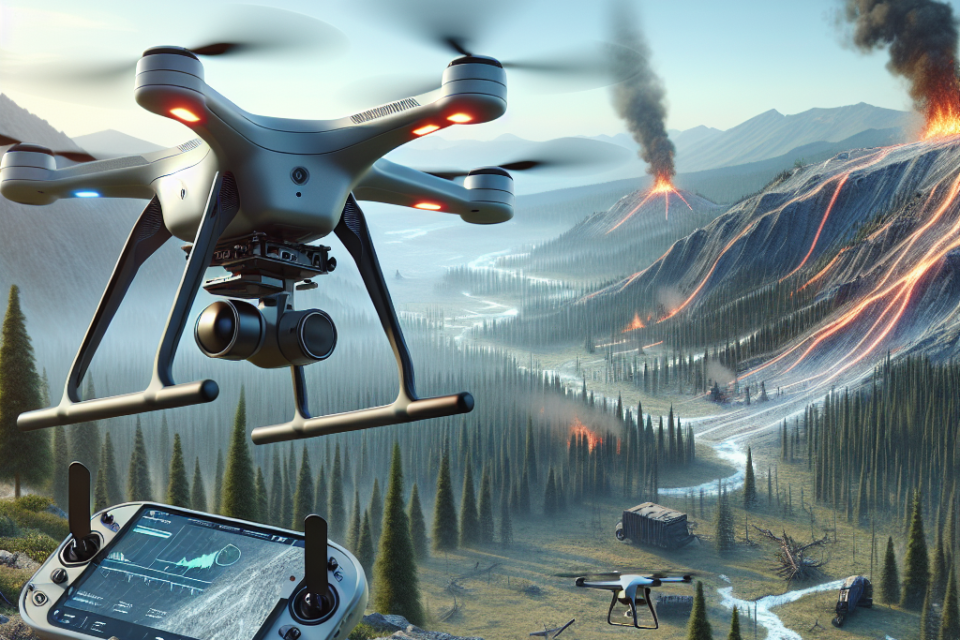How Autonomous Drones Are Transforming Search and Rescue Operations

The Rise of Autonomous Drones in Emergency Response
Search and rescue (SAR) operations have always been one of the most critical facets of emergency response. As technology has advanced, so too have the methods by which rescuers locate and assist those in distress. In recent years, autonomous drones have emerged as powerful tools that are transforming the landscape of SAR operations. These innovations not only improve efficiency but also significantly enhance the safety of both rescuers and victims.
Enhancing Situational Awareness with Aerial Surveillance
One of the primary advantages of using autonomous drones in SAR operations is their ability to provide real-time aerial surveillance. Traditional search methods often rely on ground teams or manned aircraft, both of which can be limited by weather conditions and geographical obstacles. Drones can quickly survey large areas from above, providing critical information that can guide rescue efforts.
Rapid Deployment and Coverage
Autonomous drones can be deployed swiftly in emergency situations, allowing rescuers to cover extensive areas in a fraction of the time it would take using conventional methods. Equipped with high-resolution cameras and thermal imaging, these drones can detect heat signatures and identify potential victims even in challenging conditions such as dense forests or mountainous regions.
Data Collection for Informed Decision-Making
The data collected by drones during SAR missions is invaluable. Rescue teams can analyze aerial footage and thermal images to assess the situation and plan their next steps strategically. This capability to gather and process information on-the-fly enhances situational awareness, enabling rescuers to make informed decisions quickly.
Autonomous Navigation: Overcoming Obstacles
Modern autonomous drones are equipped with sophisticated navigation systems that allow them to fly without direct human control. This technology is particularly beneficial in risky environments where human responders might face danger, such as in natural disasters or hazardous industrial sites.
Obstacle Avoidance Technologies
Many autonomous drones now feature advanced obstacle avoidance technologies. These systems use a combination of sensors, cameras, and artificial intelligence to detect and avoid obstacles during flights. This capability allows drones to navigate complex terrain and approach emergency scenes safely, reducing the risk of collisions and ensuring successful mission execution.
Real-Life Applications of Drones in Search and Rescue
Autonomous drones have already proven their effectiveness in various real-world scenarios:
- Natural Disasters: After devastating hurricanes or earthquakes, drones can quickly assess damage, locate survivors, and deliver emergency supplies.
- Missing Persons Cases: Drones have been deployed to search for missing persons in remote areas, using their thermal imaging capabilities to locate individuals who may be lost or injured.
- Coastal Rescue Operations: Lifeguards are utilizing drones equipped with flotation devices to assist swimmers in distress, providing them with critical support until human rescuers arrive.
- Mountain Rescues: In mountainous regions, drones can deliver supplies or medicine to stranded hikers or mountaineers, easing their situation while waiting for ground teams to reach them.
Challenges and Limitations
While the benefits of autonomous drones in SAR operations are significant, challenges still remain. Some of these challenges include:
- Regulatory Hurdles: The use of drones for SAR is subject to regulations that can vary by region. Coordinating with authorities and ensuring compliance can slow deployment.
- Battery Life and Payload Capacity: Drones are limited by their battery life and the equipment they can carry. In prolonged rescue operations, the need for frequent recharges can be a limitation.
- Data Privacy Concerns: The collection of aerial data can raise privacy issues, necessitating clear guidelines on how data is used and shared.
The Future of Autonomous Drones in Search and Rescue
As technology continues to evolve, the future of autonomous drones in SAR operations looks promising. Innovations in artificial intelligence, machine learning, and sensor technology will further enhance the capabilities of drones, making them even more effective in emergency response scenarios.
Integration with Other Technologies
Future SAR operations are likely to see better integration between drones and other emerging technologies, such as:
- Artificial Intelligence: AI can enhance decision-making processes during a search, automating the analysis of drone-collected data to identify patterns or promising leads.
- Blockchain Technology: Utilizing blockchain for data sharing could ensure secure and tamper-proof records of SAR operations, fostering collaboration between agencies.
- Wearable Technology: Injured persons could wear devices that automatically transmit their location to drones in real-time.
Conclusion
Autonomous drones are revolutionizing search and rescue operations by providing rapid deployment, enhanced situational awareness, and innovative solutions for locating and assisting individuals in emergency situations. While challenges remain, the ongoing advancements in technology promise to further enhance the effectiveness and reliability of drones in SAR efforts worldwide. The future of search and rescue operations is undeniably intertwined with the capabilities of autonomous drones, paving the way for safer and more efficient emergency responses.
